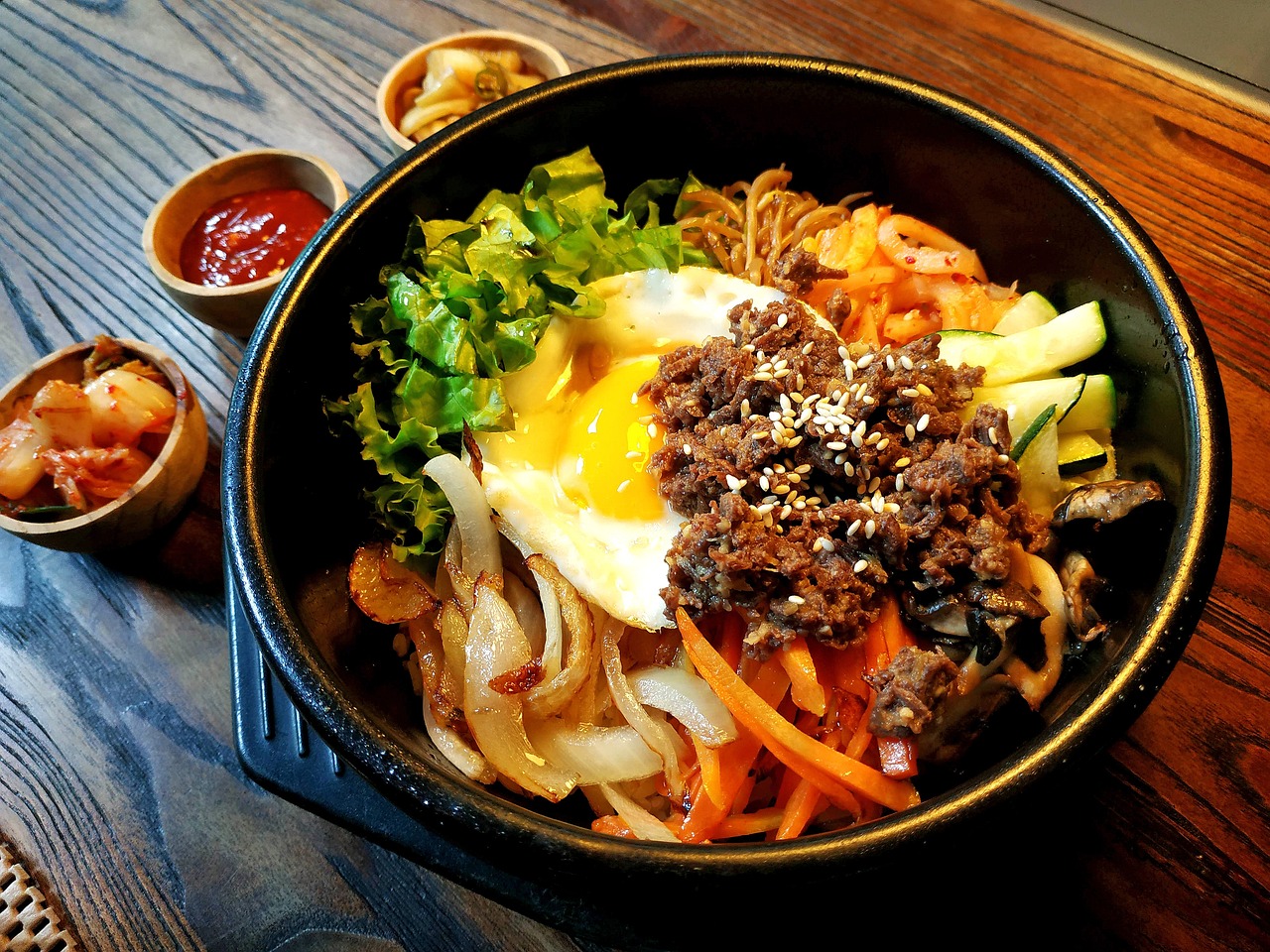
If you’ve never heard of “bibimbap,” get ready to fall in love with one of Korea’s most iconic dishes.
And if you have—then you need to know about its most famous version: Jeonju Bibimbap.
🏯 What Is Bibimbap?
Bibimbap (비빔밥) literally means “mixed rice.”
It’s a bowl of warm rice topped with a colorful array of vegetables, sliced meat, egg, and spicy-sweet gochujang (Korean chili paste).
You mix everything together before eating—and that’s where the magic happens.
But Jeonju Bibimbap isn’t just any bibimbap. It’s the gold standard.
📍 Why Jeonju?
Jeonju, a city in the southwest of Korea, is known as the culinary capital of Korean cuisine.
It’s where bibimbap evolved into an art form:
- The rice is cooked with beef broth for extra flavor
- The vegetables are carefully seasoned and balanced
- The gochujang is fermented traditionally for depth
- And the presentation? A rainbow in a bowl
Jeonju Bibimbap is even listed among the “World’s Top 100 Local Dishes” by the World Food Travel Association.

🍳 What’s in the Bowl?
- White rice (sometimes cooked with beans or grains)
- Sautéed spinach, bean sprouts, mushrooms, zucchini
- Marinated beef or bulgogi
- Fried or raw egg yolk on top
- Sesame oil and toasted seeds
- Gochujang (red chili paste) on the side or center
It’s not just a meal—it’s a balance of nutrition, color, and flavor.
🎨 A Feast for the Eyes
Jeonju Bibimbap is famous for its visual beauty.
Each ingredient is placed separately, like a painter’s palette.
Before mixing, you admire the harmony. After mixing, you taste it.
It’s a dish that invites you to participate—mixing is part of the experience.
🌱 Healthy, Hearty, and Harmonious
Bibimbap is naturally:
- Low in fat
- High in fiber
- Packed with vitamins
- Easily customizable (vegetarian, vegan, gluten-free options)
It’s a perfect introduction to Korean food for health-conscious eaters.
✈️ Where to Try It
If you’re visiting Korea, Jeonju is a must.
The city even hosts a Bibimbap Festival every year, celebrating the dish with cooking shows, tastings, and cultural performances.
You can also find Jeonju-style bibimbap in Korean restaurants around the world.
Just ask for “Jeonju Bibimbap”—and prepare to be amazed.
💬 Final Thought
Jeonju Bibimbap isn’t just food.
It’s a story of tradition, balance, and beauty—served in a bowl.
Whether you’re a foodie, a traveler, or just curious, this dish is a delicious way to taste Korea.
Ready to mix?
🔗 Sources
- Jeonju City Official Tourism Site
- Journal of Ethnic Foods – Globalization of Bibimbap
- Jeonju City Blog – Bibimbap Loved by Foreigners
📌 Content Notice
This post is intended to introduce Jeonju Bibimbap to a global audience based on publicly available sources and cultural insights.
It does not aim to promote any specific brand, region, or political agenda.
All interpretations are for informational and cultural appreciation purposes only.
'Food & Korea' 카테고리의 다른 글
| Mastering Kimbap: Rolling Techniques for a Perfect, Break-Free Roll (0) | 2025.10.12 |
|---|---|
| Sundae Gukbap: Korea’s Comforting Blood Sausage Soup, Reimagined for First-Timers (0) | 2025.10.11 |
| Dumplings Episode 04 — Friendship in a Wrapper (0) | 2025.10.09 |
| Discover Sikhye & Sujeonggwa: Korea’s Beloved Traditional Drinks (0) | 2025.10.05 |
| Vol. 3 of Dumplings for One — A Quiet Bite of Comfort (0) | 2025.10.05 |



